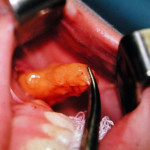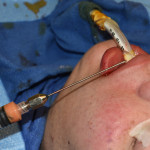Lip augmentation is a popular facial filling procedure that has been done by a wide variety of materials. Synthetic fillers, fat injection and implants have all be done with well known advantages and disadvantages. The perfect lip augmentation material, however, remains elusive
Of all the known injectable fillers, fat has a high appeal but is the most vexing. Fat is a natural material that is unique to each patient and everyone has enough to harvest to do lip augmentation. But even in small volume placements like the lips, its retention and survival is far from assured. In fact, substantial clinical experience has shown that the lips actually have one of the lower rates of fat grafting success on the face. Whether that is due to high motion activity of the lips or their lack of much native fat tissue is unknown.
The donor site for lip fat injections has been harvested from just about every body donor site imaginable. No one knows if the donor source of fat grafting affects how well the fat graft takes although it is hard to imagine that it does not play some role albeit even if it is a minor one.



Dr. Barry Eppley
Indianapolis, Indiana


